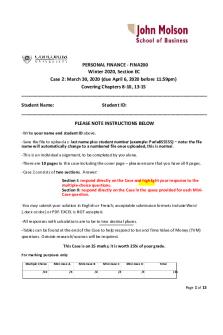Bikini-bottom-genetics-2-name-use-your-knowledge-of-genetics-to3847-1-2 no answers PDF

| Title | Bikini-bottom-genetics-2-name-use-your-knowledge-of-genetics-to3847-1-2 no answers |
|---|---|
| Author | Issam Assaf |
| Course | english |
| Institution | Lawndale High School |
| Pages | 2 |
| File Size | 107.1 KB |
| File Type | |
| Total Downloads | 34 |
| Total Views | 137 |
Summary
good work...
Description
Bikini Bottom Genetics 2
Name __________________________
Use your knowledge of genetics to complete this worksheet. 1. Use the information for SpongeBob’s traits to write the phenotype (physical appearance) for each item. Trait
Dominant Gene Recessive Gene
Body Shape
Squarepants (S)
Roundpants (s)
Body Color
Yellow (Y)
Blue (y)
Eye Shape
Round (R)
Oval (r)
Nose Style
Long (L)
Stubby (l)
(a) LL-______________
(e) Rr-_______________
(b) yy-_______________
(f) ll- _______________
(c) Ss-_______________
(g) ss- _______________
(d) RR - _____________
(h) Yy -______________
2. Use the information in the chart above to write the genotype (or genotypes) for each trait below. (a) Yellow body - ___________ (b) Roundpants - ___________ (c) Oval eyes - ______________ (d) Long nose - _____________
(e) Stubby nose - ___________ (f) Round eyes - ____________ (g) Squarepants - ___________ (h) Blue body - ____________
3. Determine the genotypes for each using the information in the chart above. (a) Heterozygous round eyes -_____
(c) Homozygous long nose - ______
(b) Purebred squarepants - ______
(d) Hybrid yellow body - ______
4. One of SpongeBob’s cousins, SpongeBillyBob, recently met a cute squarepants gal, SpongeGerdy, at a local dance and fell in love. Use your knowledge of genetics to answer the questions below.
__ (a) If SpongeGerdy’s father is a heterozygous squarepants and her mother is a roundpants, what is her genotype? Complete the punnett square to show the possible genotypes that would result to help you determine Gerdy’s genotype. What is Gerdy’s genotype? _________
__
__ __
(b) SpongeBillyBob is heterozygous for his squarepants shape. What is his genotype? ________ (c) Complete the punnett square to show the possibilities that would result if Billy Bob & Gerdy had children.
__
__
(d) List the possible genotypes and phenotypes for the kids.
__ (e) What is the probability of kids with squarepants? _____ %
__
(f) What is the probability of kids with roundpants? _____ % T. Trimpe 2004
http://sciencespot.net/
5. SpongeBob’s aunt and uncle, SpongeWilma and SpongeWilbur, have the biggest round eyes in the family. Wilma is believed to be heterozygous for her round eye shape, while Wilbur’s family brags that they are a pure line. Complete the punnett square to show the possibilities that would result if SpongeWilma and SpongeWilbur had children. (a) Give the genotype for each person.
Wilma - _______
Wilbur - ________
(b) Complete the punnett square to show the possibilities that would result if they had children.
__ __ __
__
(c) List the possible genotypes and phenotypes for the kids.
(d) What is the probability that the kids would have round eyes? ____ % (e) What is the probability that the kids would be oval eyes? ____ %
6. SpongeBob’s mother is so proud of her son and his new wife, SpongeSusie, as they are expecting a little sponge. She knows that they have a 50% chance of having a little roundpants, but is also hoping the new arrival will be blue (a recessive trait) like SpongeSusie and many members of her family. If SpongeBob is heterozygous for his yellow body color, what are the chances that the baby sponge will be blue? Create a punnett square to help you answer this question.
7. SpongeBob’s aunt is famous around town for her itty, bitty stubby nose! She recently met a cute squarepants fellow who also has a stubby nose, which is a recessive trait. Would it be possible for them to have a child with a regular long nose? Why or why not? Create a punnett square to help you answer this question.
8. If SpongeBob’s aunt described in #7 wanted children with long noses, what type of fellow would she need to marry in order to give her the best chances? Create a punnett square to help you answer this question.
T. Trimpe 2004
http://sciencespot.net/...
Similar Free PDFs

Case 2 Instructions - no answers
- 13 Pages

No tears for Frankie Answers
- 2 Pages

Old exam problems ch. 15b NO Answers
- 69 Pages

Symphony No. 8 Symphony NO
- 5 Pages

Fushigi no Kuni no Alice
- 8 Pages

No Enlace
- 5 Pages
Popular Institutions
- Tinajero National High School - Annex
- Politeknik Caltex Riau
- Yokohama City University
- SGT University
- University of Al-Qadisiyah
- Divine Word College of Vigan
- Techniek College Rotterdam
- Universidade de Santiago
- Universiti Teknologi MARA Cawangan Johor Kampus Pasir Gudang
- Poltekkes Kemenkes Yogyakarta
- Baguio City National High School
- Colegio san marcos
- preparatoria uno
- Centro de Bachillerato Tecnológico Industrial y de Servicios No. 107
- Dalian Maritime University
- Quang Trung Secondary School
- Colegio Tecnológico en Informática
- Corporación Regional de Educación Superior
- Grupo CEDVA
- Dar Al Uloom University
- Centro de Estudios Preuniversitarios de la Universidad Nacional de Ingeniería
- 上智大学
- Aakash International School, Nuna Majara
- San Felipe Neri Catholic School
- Kang Chiao International School - New Taipei City
- Misamis Occidental National High School
- Institución Educativa Escuela Normal Juan Ladrilleros
- Kolehiyo ng Pantukan
- Batanes State College
- Instituto Continental
- Sekolah Menengah Kejuruan Kesehatan Kaltara (Tarakan)
- Colegio de La Inmaculada Concepcion - Cebu









